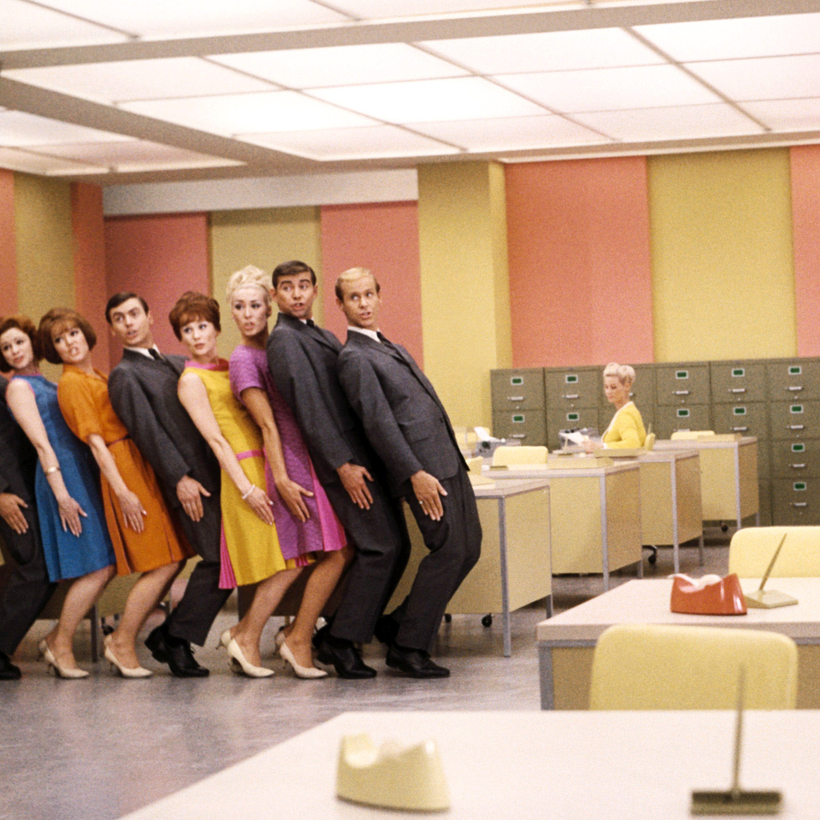In 2001, when the Internet was so new that many people didn’t have it in their homes yet, the Society for Human Resource Management published an article titled “Making Telecommuting Work.” They warned that the problem wasn’t the technology.
“The biggest barrier to telework is still resistance by middle management,” the article stated. “If Big Bob looks out over his Dilbertville and doesn’t see cubicles filled with busy workers, he’s going to wonder and feel uncomfortable about what he’s paying the Little Bobs to do.”
Twenty years and one coronavirus pandemic later, the technology that allows for remote work has evolved beyond our wildest dreams (and nobody, thank God, refers to the office as “Dilbertville” anymore). It’s hard to remember a time without Zoom, or to go even a few minutes without hearing the familiar three taps of a Slack notification. People have gotten really good at working from home.
Now, with employers trying to coax their scattered workforce back to newly reopened offices, the Little Bobs are in full revolt.
It turns out that a lot of people liked being cut loose from office life. Young people who lack responsibilities (spouses, kids) enjoy the no-fixed-address freedom of traveling and working from wherever they want. People with young kids are able to actually enjoy them. And older people can finally be rid of the commutes they wasted months of their lives on.
The threat of having to relinquish remote work has sparked a war between employees and their bosses. Some are handing in resignations; others are making demands. The issue has emerged in every industry, from finance to media to nonprofit to manufacturing.
“When managers start informing people in the group that they will be the ones returning, it’s causing some major friction,” an industrial-supply-chain manager tells me. “One of them is so upset about it he’s actually looking for another job. The other guy is fine with it now, but his initial reaction in the Zoom department meeting was: WTF, why me?”
For younger people, workplace flexibility has become even more important than salary, benefits, and stock options. According to a Bloomberg–Morning Consult survey from early June, nearly half of workers under 40 were prepared to quit if they couldn’t continue to work remotely at least part of the time.
Op-Ed Turned Scandal du Jour
Hints of the at-home-versus-in-person debate started early on in the pandemic, but the issue emerged in full force in May, following an ill-advised op-ed from Washingtonian owner Cathy Merrill.
While Merrill’s essay was ostensibly meant to persuade reluctant employees of the benefits of returning to in-person work, in practice it read more like a threat. “Remember something every manager knows,” Merrill wrote. “The hardest people to let go are the ones you know.”
The response from Washingtonian employees was not what Merrill expected. The staff staged a sort of remote walkout, halting publishing operations for one day and turning the op-ed into an object lesson about the power of worker solidarity.
“It was really a kick in the teeth,” says Andrew Beaujon, a senior editor at Washingtonian. “For Cathy to threaten to take away our health insurance or fire us if she didn’t see us in the office really struck us as churlish and unfair.” (Merrill declined AIR MAIL’s request for an interview.)
It was also a serious error in judgment, after a year in which Washingtonian employees had kept the magazine and Web site going amid considerable volatility, from the pandemic to the B.L.M. protests, to the rallies and violence that followed the presidential election.
Some employees had been tear-gassed while covering stories. All were exhausted. And nobody, Beaujon says, was willing to be strong-armed back into the office by unappreciative management.
“We were saying, Let’s tap the brakes on this, and also, consult us,” he says.
It was an omen of things to come. One by one, industry by industry, employers tried to flex on employees with regard to remote-work policy—and one by one, the workforce responded with a resounding “Nope.”
BlackRock, the world’s largest asset manager, whose New York headquarters housed thousands of people in pre-coronavirus times, has been trying to lure vaccinated employees back to work since early this year.
“For Cathy [Merrill] to threaten to take away our health insurance or fire us if she didn’t see us in the office really struck us as churlish and unfair.”
Before vaccines became widely available, BlackRock was offering free rapid tests to all employees upon entry to the office (or PCR tests, by mail delivery). They started offering free lunches. All of the senior staff was coming to work every day, attempting to lead by example.
But none of it worked. As of now, the company’s towering Midtown Manhattan offices are largely empty except for the executive team. (BlackRock’s most recent announcement to employees requires them to be in the office starting the Tuesday after Labor Day.)
The big banks are desperate, too. Morgan Stanley C.E.O. James Gorman came under fire recently after taking a hard line on the return to in-person work, pointing out that, “if you can go to a restaurant in New York City, you can come in to the office.”
Last month, JPMorgan Chase set up a contest among the investment bankers in its North America division, awarding senior bankers points for in-person meetings with clients. It also encouraged managing directors to start traveling again: “If you need to use a plane to go see a client, use it,” JPMorgan Chase C.E.O. Jamie Dimon is reported to have said. “There are no excuses.”
Goldman Sachs’s David Solomon, meanwhile, tried to set an example, asking his bankers if they had clients he should visit while traveling on the company jet.
Law firms are caught between the competing demands of attorneys, who value the ability to work from home, and clients, who don’t want to keep conducting sensitive legal business over Zoom.
And while Facebook and Google capitulated early on, implementing more permissive remote-work policies, Apple has been embroiled in an ongoing conflict with recalcitrant employees after mandating a return to the office for a minimum of three days per week. (The company recently announced that office reopening would be postponed until October due to spiking coronavirus cases, but it is still holding firm on the requirement that employees eventually work on-site.)
The Devil Wears Prada Meets the Pandemic
A little-discussed aspect of the remote-work revolution is how it exacerbated class-based resentments. Emma, a media executive in her mid-30s whose name has been changed for privacy, recalled the moment when her boss criticized a team of underpaid assistants—many of whom were jockeying for workspace in tiny apartments with multiple roommates—for their aesthetically disappointing Zoom backgrounds.
The punchline: a gleaming marble kitchen straight out of a Nancy Meyers movie was clearly visible over the boss’s shoulder. “We Zillowed her address and she lives in a mansion in New Jersey,” Emma says. “We were like, Eat the rich … and you’re first.”
Once, this was the infuriating but intractable condition of employment in glamour industries such as media, publishing, and fashion: employees were required to live in one of the world’s most expensive cities, while making the same yearly salary as a nursery-school teacher in Omaha.
Those who took the opportunity provided by the pandemic to improve their lives by moving somewhere more affordable are understandably reluctant to return to the previous status quo.
“We were like, Eat the rich … and you’re first.”
In other industries, things are less fraught. Pam Fines, a manager in consulting engineering in Alberta, Canada, is spearheading her company’s efforts to bring people back in, and is confident despite the challenges. She says her team will be following the employees’ lead in order to create a hybrid model that works for everyone. But she also hopes they decide on their own to jump back into office life.
“I won’t demand it,” Fines tells me, “but I see lots of our best work done collaboratively, in person, especially for young developing engineers. I wouldn’t be the professional I am today without the teams I worked with.”
For most companies, it’s a fair bet that workers will ultimately want to come back, if not for a full five-day workweek—particularly once gathering indoors is no longer associated with risk. There are certainly downsides to eliminating the boundaries between home and workplace, whether it’s a Jeffrey Toobin–style snafu or just the feeling of never really being not at work.
And not everyone loves the new normal of the remote office. Some people find their home environment distracting; others would simply like a break from the people they live with after a year of continuous contact. There’s even a body of evidence that suggests we need our morning commute—that the process of physically going to the office enforces an important boundary between our professional and personal lives.
Whatever the path forward, what’s certain is that the balance of power has shifted. “Cathy’s op-ed, ironically, brought us all together,” Andrew Beaujon says of his co-workers.
On the day I spoke to Beaujon, management had just made an announcement: the Washingtonian offices would reopen. But working there, for the foreseeable future, would be entirely voluntary.
Kat Rosenfield is a culture writer and novelist. Her next book, No One Will Miss Her, will be published in October


